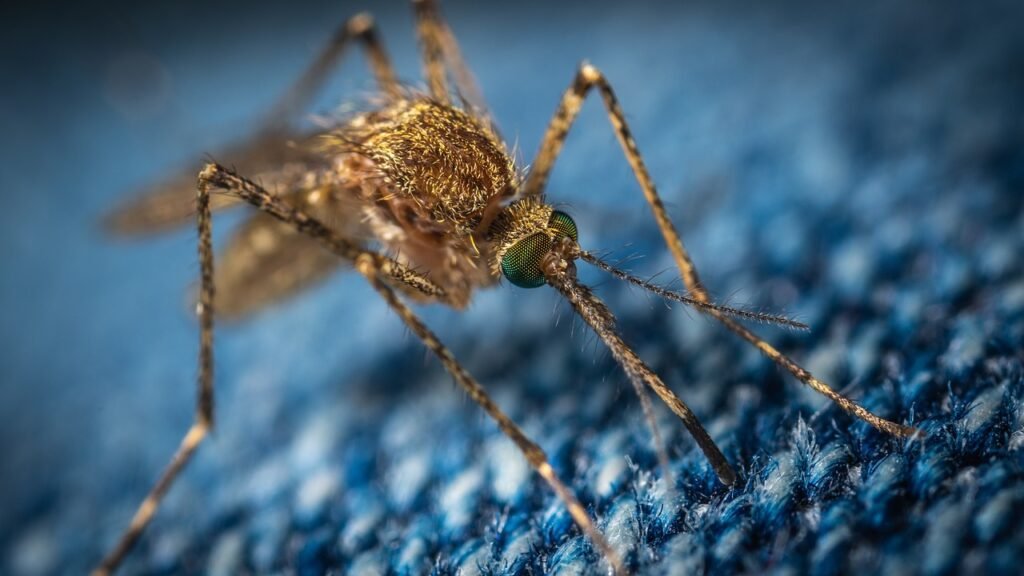Indice
- Introduction to Chromosomes: The Blueprint of Life
- Structure and Composition of Chromosomes
- How Chromosomes Work: Replication and Cell Division
- XY vs. XX: Understanding Sex Chromosomes
- Chromosomal Inheritance: Passing Traits to Offspring
- Common Chromosomal Anomalies and Their Effects
- Detecting Chromosomal Abnormalities: Karyotyping and Genetic Testing
- Chromosomal Evolution: Changes Over Time
- Current Research and Future Perspectives in Chromosome Studies
- Conclusion: The Importance of Chromosomes in Understanding Life and Health
Introduction to Chromosomes: The Blueprint of Life
The Structure of Chromosomes
Chromosomes are thread-like structures made of DNA and proteins, known as histones, which package and regulate the DNA. Each chromosome consists of a long DNA molecule that contains many genes, the basic units of heredity. In humans, there are 23 pairs of chromosomes, totaling 46. Of these, one pair determines an individual’s sex: females typically have two X chromosomes (XX), while males have one X and one Y chromosome (XY). The structure of chromosomes is crucial for DNA replication and cell division, ensuring that genetic information is accurately passed on during cell division.
Functions of Chromosomes
Chromosomes play several essential roles in cellular life. Firstly, they are responsible for the storage of genetic information that dictates the physical and functional traits of an organism. This information is carried in the sequence of nucleotides within the DNA. Additionally, chromosomes ensure proper distribution of genetic material during cell division through a highly coordinated process called mitosis. This process enables the formation of two genetically identical daughter cells, which is vital for growth, development, and tissue repair.
Sex Chromosomes and Genetic Determination
The two types of sex chromosomes, X and Y, play a crucial role in determining the biological sex of an individual. The presence of two X chromosomes in females leads to the expression of genes located on the X chromosome, while the presence of a Y chromosome in males introduces different genes, such as SRY (Sex-determining Region Y), which triggers male development. This genetic difference not only influences sexual development but can also impact various traits and susceptibility to certain diseases. Understanding the role of sex chromosomes is fundamental to the study of genetics, reproduction, and evolutionary biology.
Structure and Composition of Chromosomes
Chromatin: The Building Blocks of Chromosomes
Chromosomes are primarily composed of chromatin, a complex of DNA and proteins. The DNA wraps around histones, which are proteins that help condense and organize the DNA into a compact structure. This packaging is essential because it allows the long strands of DNA to fit within the nucleus of a cell. Chromatin exists in two forms: euchromatin, which is loosely packed and accessible for gene expression, and heterochromatin, which is tightly packed and generally inactive. This dynamic structure of chromatin increases the efficiency of DNA replication and repair processes.
Telomeres and Centromeres: Key Features of Chromosomes
Each chromosome has specialized regions known as telomeres and centromeres. Telomeres are repetitive nucleotide sequences at the ends of chromosomes that protect them from degradation and prevent them from fusing with neighboring chromosomes. They play a crucial role in cellular aging and limit the number of times a cell can divide. On the other hand, the centromere is the constricted region where sister chromatids are joined together during cell division. It plays a critical role in the proper segregation of chromosomes ensuring that each daughter cell receives the correct complement of chromosomes.
Karyotypes: A Visual Representation of Chromosomes
A karyotype is a visual representation of an individual’s chromosomes, arranged in order of size and shape. This standard technique is used in cytogenetics to assess chromosomal abnormalities such as aneuploidy, where there is an abnormal number of chromosomes, or structural changes such as deletions, duplications, or translocations. Karyotyping is a valuable tool in clinical genetics for diagnosing genetic disorders, understanding infertility issues, and managing certain cancers, making it an integral part of modern medical practice.
How Chromosomes Work: Replication and Cell Division

The Process of DNA Replication
DNA replication is a critical process that occurs before a cell divides, ensuring that each daughter cell receives an identical copy of genetic information. The process begins at specific sites called origins of replication, where the DNA double helix unwinds and separates into two single strands. An enzyme called DNA polymerase synthesizes new strands by adding complementary nucleotides to each original strand, resulting in two identical double helices. This semi-conservative mechanism ensures that one original strand is retained in each of the new DNA molecules, preserving the genetic information.
Mitosis: The Mechanism of Cell Division
Mitosis is the process by which a single cell divides to produce two genetically identical daughter cells. It consists of several phases: prophase, metaphase, anaphase, and telophase. During prophase, chromatin condenses into visible chromosomes, and the mitotic spindle begins to form. In metaphase, chromosomes align at the cell equator, ensuring that each sister chromatid is connected to spindle fibers from opposite poles. Anaphase follows, where the sister chromatids are pulled apart to opposite ends of the cell. Finally, in telophase, the chromosomes de-condense, and two nuclei form, culminating in cytokinesis, where the cytoplasm divides to produce two distinct cells.
The Role of Meiosis in Genetic Variation
Meiosis is a specialized form of cell division that produces gametes—sperm and egg cells—which have half the number of chromosomes of a typical body cell. This process is crucial for sexual reproduction and contributes to genetic diversity. Meiosis consists of two rounds of division: meiosis I and meiosis II. During prophase I, homologous chromosomes pair up and exchange genetic material through a process called crossing over. This exchange of DNA leads to new combinations of genetic information. Subsequently, meiosis I separates the homologous chromosomes, and meiosis II separates the sister chromatids, ultimately resulting in four genetically diverse daughter cells. This increased genetic variability is fundamental for evolution and adaptation in changing environments.
XY vs. XX: Understanding Sex Chromosomes
The XY Chromosome System
The XY chromosome system is primarily responsible for determining the biological sex in humans and many other organisms. In this system, males typically possess one X and one Y chromosome (XY), while females have two X chromosomes (XX). The Y chromosome is significantly smaller than the X chromosome and carries fewer genes. One of the most crucial genes located on the Y chromosome is the SRY (Sex-determining Region Y) gene, which triggers the development of male sexual characteristics by stimulating the formation of testes. The presence of these testes leads to the production of male hormones, such as testosterone, which influence further development of male traits and reproductive organs.
The Role of the XX Chromosome System
In individuals with two X chromosomes (XX), these chromosomes carry a wide array of genetic information necessary for various biological functions and traits. The X chromosome is larger and contains many more genes than the Y chromosome, with some involved in critical functions such as vision, immune response, and brain development. Females typically express genes from both X chromosomes, and in cases of genetic dominance, one may exert its influence over the other. Additionally, in a phenomenon known as X-inactivation, one of the X chromosomes in females is randomly inactivated during early embryonic development, ensuring that the dosage of X-linked genes is balanced with that of males, preventing potential overexpression of these genes.
Common Genetic Disorders Related to Sex Chromosomes
Chromosomal anomalies involving the sex chromosomes can lead to various genetic disorders. For instance, Turner syndrome occurs in females with only one X chromosome (45,X) and is characterized by short stature, infertility, and various congenital abnormalities. Conversely, Klinefelter syndrome results in males with an extra X chromosome (47,XXY), leading to symptoms such as reduced testosterone levels, infertility, and sometimes learning difficulties. Another condition, Androgen Insensitivity Syndrome, can affect individuals with XY chromosomes, resulting in the development of female physical traits despite having male genetic makeup due to the body’s inability to respond to androgens. Understanding these conditions emphasizes the importance of sex chromosomes in human genetics and reproductive health.
Chromosomal Inheritance: Passing Traits to Offspring

Basic Principles of Genetic Inheritance
Chromosomal inheritance refers to the way traits are transmitted from parents to offspring through genes located on chromosomes. Each parent contributes half of their chromosomes to their offspring—23 from the mother and 23 from the father, resulting in a total of 46 chromosomes. Genes, which are segments of DNA, determine specific traits such as eye color, hair texture, and susceptibility to certain diseases. The combination of alleles (different versions of a gene) inherited from both parents ultimately shapes the unique genetic makeup of the offspring.
Mendelian Inheritance Patterns
The principles of inheritance were first systematically outlined by Gregor Mendel in the 19th century through his experiments with pea plants. Mendelian inheritance includes concepts like dominant and recessive alleles. A dominant allele will mask the expression of a recessive allele in the phenotype. For example, if a child inherits a dominant allele for brown eyes from one parent and a recessive allele for blue eyes from the other, the child will have brown eyes. Additionally, Mendel identified the law of segregation, which states that during gamete formation, the alleles for each gene separate, ensuring that offspring receive one allele from each parent.
Complex Inheritance Patterns
While Mendelian inheritance explains many traits, not all genetic inheritance follows simple dominant-recessive patterns. In cases of incomplete dominance, for example, the phenotype expressed is a blend of the two alleles, such as a red and white flower producing pink offspring. Another example is codominance, where both alleles are expressed equally, as seen in blood type AB where both A and B antigens are present. Furthermore, polygenic inheritance involves multiple genes contributing to a single trait, such as height or skin color, resulting in a continuous range of phenotypes. Understanding these complex inheritance patterns provides insight into the genetic diversity observed within populations.
Common Chromosomal Anomalies and Their Effects

Types of Chromosomal Anomalies
Chromosomal anomalies can primarily be categorized into two types: numerical and structural abnormalities. Numerical abnormalities occur when there are changes in the number of chromosomes, leading to conditions like aneuploidy, where individuals have an abnormal number of chromosomes, such as Down syndrome (Trisomy 21), characterized by an extra copy of chromosome 21. Structural abnormalities involve changes in the structure of chromosomes, including deletions, duplications, inversions, or translocations of chromosome segments. These anomalies can disrupt normal gene function and are associated with various genetic disorders.
Effects of Common Chromosomal Anomalies
The effects of chromosomal anomalies depend significantly on the specific chromosomes and genes involved. For example, individuals with Down syndrome often exhibit characteristic facial features, developmental delays, and an increased risk for certain health issues such as heart defects and digestive problems. Turner syndrome, resulting from a missing or incomplete X chromosome in females, leads to short stature, infertility, and various physical abnormalities. The implications of these anomalies vary widely, but they commonly affect growth, development, and overall health.
Diagnosis and Management of Chromosomal Anomalies
Diagnosis of chromosomal anomalies typically involves techniques such as karyotyping, which visualizes the number and structure of chromosomes, and molecular genetic testing, which can identify specific mutations or deletions. Early diagnosis is crucial as it allows for better management strategies, including genetic counseling and personalized healthcare plans for affected individuals. Advances in prenatal screening, such as non-invasive prenatal testing (NIPT), have enabled early detection of conditions like Down syndrome, allowing prospective parents to make informed decisions while preparing for the needs of their child. Continuous research into the genetic mechanisms underlying these anomalies holds promise for future therapeutic interventions.
Detecting Chromosomal Abnormalities: Karyotyping and Genetic Testing

Karyotyping: A Crucial Diagnostic Tool
Karyotyping is a laboratory technique used to visualize and analyze an individual’s chromosomes. This process involves culturing cells, typically from blood or amniotic fluid, and then arresting cell division at metaphase when chromosomes are most visible. The chromosomes are stained and photographed, and the images are arranged in pairs based on size and shape. Karyotyping can identify chromosomal abnormalities such as aneuploidy, where there are too many or too few chromosomes (e.g., Down syndrome with an extra chromosome 21), and structural anomalies like deletions or translocations. This method is invaluable in diagnosing genetic disorders, planning treatment for various conditions, and assessing reproductive health.
Genetic Testing: More Than Just Karyotyping
While karyotyping provides a broad view of chromosomal structure, genetic testing delves deeper into DNA sequence analysis to detect specific mutations or genetic disorders. Various methods, such as Polymerase Chain Reaction (PCR) and Next-Generation Sequencing (NGS), can pinpoint tiny changes in genes that may lead to inherited conditions. Genetic testing can be performed as a diagnostic tool to confirm a suspected genetic disorder, as a screening method to identify carriers of genetic mutations, and even as a preventive measure in prenatal care to assess potential risks for the fetus. This advanced approach enhances understanding and management of inherited diseases.
Implications and Importance of Early Detection
The early detection of chromosomal abnormalities through karyotyping and genetic testing has significant implications for individuals and families. It allows for timely intervention, such as tailored healthcare plans and support services. Furthermore, understanding the genetic basis of certain conditions can lead to improved management strategies, including targeted therapies and lifestyle adjustments. For prospective parents, genetic counseling following testing can provide critical information about risks for future pregnancies and help them make informed reproductive choices. As technology advances, the integration of genetic testing into routine healthcare may lead to better outcomes and enhanced quality of life for individuals with chromosomal abnormalities.
Chromosomal Evolution: Changes Over Time

The Origins of Chromosomes
Chromosomes have evolved significantly over time through processes such as duplication, deletion, and rearrangement of genetic material. Early life forms likely had simpler structures of genetic material; however, as organisms diversified, the structure and number of chromosomes became more complex. For instance, the common ancestor of all eukaryotes (organisms with complex cells) is believed to have possessed a relatively small number of chromosomes. As evolution progressed, mechanisms like whole-genome duplications and chromosomal fusions contributed to the increase in chromosome numbers and diversity seen in modern species.
Evolutionary Pressures and Chromosomal Changes
Natural selection and environmental pressures also play a crucial role in shaping chromosomal evolution. In response to changing environments, organisms can undergo chromosomal adaptations such as changes in chromosome number (aneuploidy) or structure. For example, the fission or fusion of chromosomes can lead to reproductive isolation, which is a critical component of speciation—the process by which new species arise. Studies show that in some plant species, for instance, polyploidy (the condition of having more than two paired sets of chromosomes) is common and provides advantages in survival, such as increased size, vigor, and adaptability, further affecting the evolutionary trajectory of these species.
Human Chromosomal Evolution: A Closer Look
In humans, evolutionary changes in chromosomes have been documented through comparative genomics, which highlights the differences and similarities in chromosome structure and number across species. Humans possess 23 pairs of chromosomes, and studies suggest that the fusion of two ancestral ape chromosomes formed human chromosome 2. This fusion is supported by genomic evidence, as remnants of telomere sequences and centromeres can be found at the fusion site, marking a distinct evolutionary event. Understanding these changes gives insight into human ancestry and illustrates the dynamic nature of chromosomes throughout evolutionary history.
Current Research and Future Perspectives in Chromosome Studies

Advancements in Chromosome Research Techniques
Recent advancements in imaging technologies and genome editing tools have revolutionized chromosome studies. Techniques such as CRISPR-Cas9 allow scientists to edit specific genes within chromosomes, providing insights into gene function and the mechanisms behind genetic diseases. High-resolution imaging techniques, including fluorescence in situ hybridization (FISH) and super-resolution microscopy, enable researchers to visualize chromosomes in real time within living cells. These innovations make it possible to study chromosome behavior during cell division and identify structural rearrangements associated with various diseases, enhancing our understanding of chromosomal integrity and stability.
Understanding Chromosomal Dynamics in Health and Disease
Research is increasingly focused on the role of chromosomal dynamics in health and disease. Chromosome missegregation during cell division can lead to aneuploidy, a common feature in many cancers. Understanding the underlying mechanisms that regulate chromosome segregation is crucial for developing therapeutic strategies to target cancer cells selectively. Furthermore, epigenetic modifications—changes in gene expression without altering the DNA sequence—are being explored for their influence on chromosomal behavior. Scientists are investigating how environmental factors and lifestyle choices can lead to epigenetic alterations that affect chromosomal function, thereby contributing to a range of health conditions including obesity, diabetes, and mental health disorders.
Future Perspectives: Personalized Medicine and Gene Therapy
The future of chromosome research holds promising implications for personalized medicine and gene therapy. Advances in genomic sequencing technologies are allowing for more accurate assessments of chromosomal abnormalities in individuals, guiding tailored treatment plans based on specific genetic profiles. Additionally, gene therapy approaches, which aim to correct defective genes through direct delivery into patients’ cells, are gaining traction. Researchers are optimistic that with enhanced understanding of chromosomal functions and interactions, new therapies could be developed to address genetic disorders at their root by targeting the specific chromosomal anomalies responsible for these conditions. This shift towards precision medicine represents a significant leap forward in the management of genetic diseases and overall healthcare.
Conclusion: The Importance of Chromosomes in Understanding Life and Health

Chromosomes as the Foundation of Genetics
Chromosomes serve as the cornerstone of genetics, housing the essential information that shapes each organism’s development, functioning, and reproduction. By understanding their structure and function, researchers can unlock the mysteries behind hereditary traits and genetic diseases. The study of chromosomes has led to numerous breakthroughs in fields like medicine, agriculture, and evolutionary biology, enhancing our ability to diagnose and treat conditions that arise from chromosomal anomalies. For instance, advances in genetic testing and karyotyping have paved the way for precise identification of genetic disorders, allowing for timely interventions that improve patient outcomes.
The Role of Chromosomes in Health and Disease
Chromosomes play a pivotal role in health, influencing susceptibility to various diseases and conditions. Their abnormalities—whether numerical, such as aneuploidy, or structural, such as deletions and duplications—can significantly alter an individual’s health profile, leading to congenital disorders, certain types of cancer, and other health issues. Understanding these chromosomal associations helps in developing targeted therapies and preventive measures. For example, identification of specific genetic markers linked to diseases can inform risk assessments and guide preventive healthcare strategies, ultimately contributing to improved public health outcomes.
Future Directions in Chromosome Research
The ongoing exploration of chromosomes promises to yield further insights into the complexities of genetics and human health. Current research is intensifying in areas such as epigenetics, where scientists examine how environmental factors influence gene expression without altering the underlying DNA sequence. Additionally, advancements in gene editing technologies like CRISPR are revolutionizing our ability to manipulate chromosomes at the molecular level, opening pathways for innovative treatments of genetic disorders. As our understanding of chromosomes deepens, we are on the brink of transformative changes in personalized medicine and therapeutic interventions, which will enhance our ability to treat and prevent diseases effectively, ultimately fostering healthier lives.




